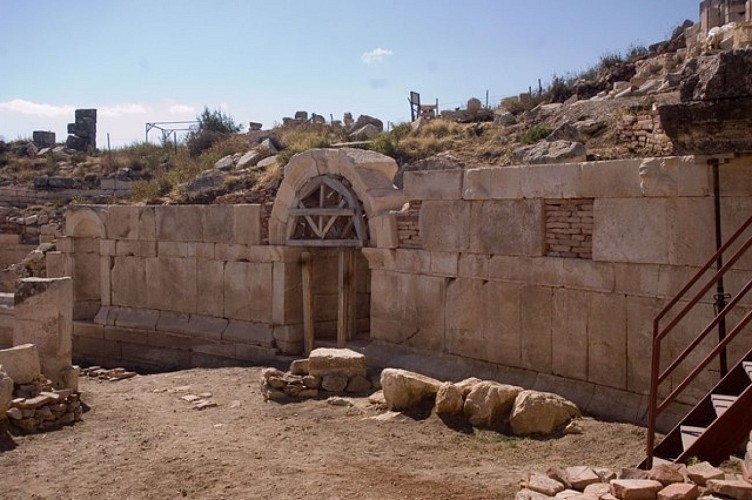Alert
Alerts
The Lower Agora

Description
The Lower Agora
The Lower Agora was built during the reign of Emperor Augustus (27 BC -14 AD). Statue bases with inscriptions dedicated to important citizens can still be seen today along the east side of the agora, which was lined by a colonnade with a row of shops behind it. On the west side stood an identical colonnade, but without any shops. These covered colonnades (porticos) protected pedestrians from sun, rain and snow. When the agora was renovated in the second quarter of the 6th century AD, the western portico was divided into small eating houses and wine bars. The eastern portico had a large restaurant with a bar, a kitchen, a bedroom and a storage space.
On the northwest side of the agora the remains of a monumental fountain, can be seen. Water cascaded from the back wall of the fountain into the large basin in front, providing refreshment to passers-by. The back wall has eight niches for statues and a series of columns elevated on pedestals.
In the early Severan period a new, elaborate entablature replaced the original one and topped with statues of the goddess Victory.
Around 120 AD, a curved terrace wall was constructed that joined the agora to the upper city. The wall also featured the busts of the six important gods of Sagalassos. Two of these are still in place: Hercules and Ares. The other four are in the collection of the Museum of Burdur.
Technical Information
Altimetric profile
Data author

